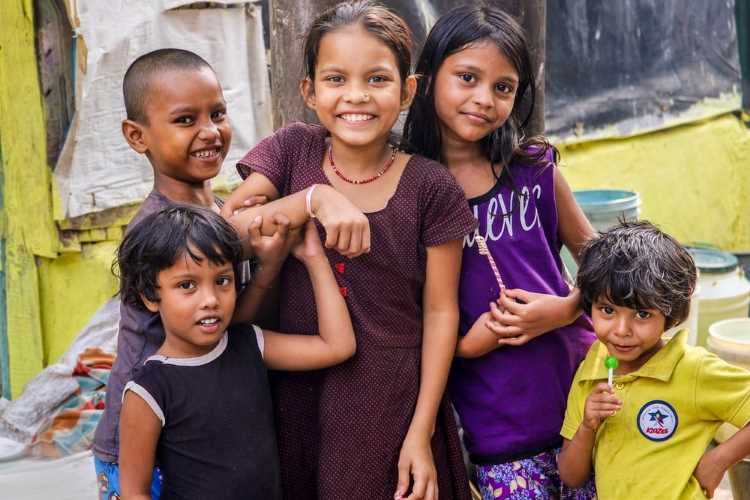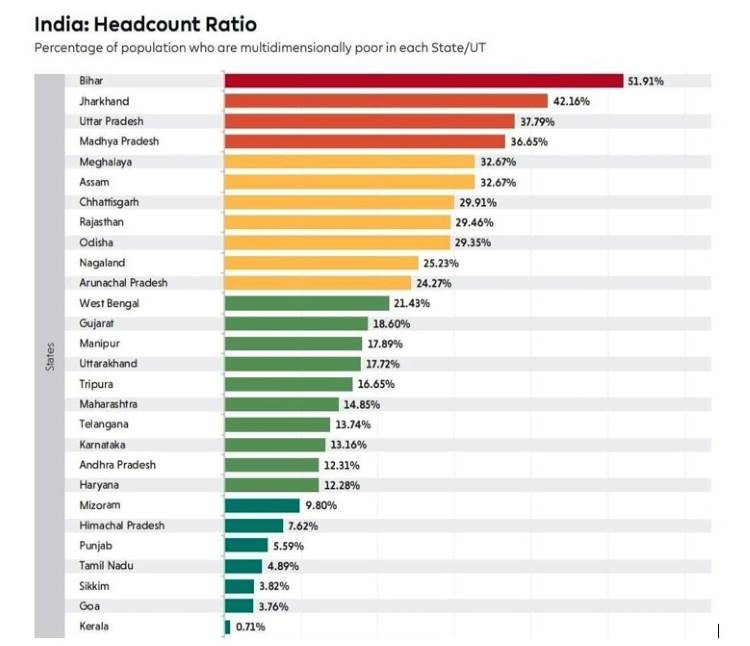
National Multidimensional Poverty Index: The poverty headcount study of the Indian states has thrown up some stark but not totally unexpected results. The numbers have brought the perpetuation of poverty in Uttar Pradesh, Bihar, and Jharkhand, as well as in tribal areas of Madhya Pradesh to focus. These states get the bulk of Union government grants through the finance commission and central schemes for poverty alleviation measures. The issue emerging is one of governance. NITI Aayog has ranked states on the percentage of population suffering multidimensional poverty.
The inability of some states to break away from the grip of poverty highlights the need for a targeted approach using common household databases such as SAMAGRA. The integrated approach will enable the government to target the schemes to the poorest families and ensure that they are not left out.
READ I Common household database panacea for human development woes
National Multidimensional Poverty Index
The National Multidimensional Poverty Index baseline report published by Niti Aayog defines poverty based on deprivation in parameters such as health, education and living standards. The report is based on the findings of the National Family Health Survey IV.

The states marked in green highlight the impact of effective administration of MSP and MSMEs. Reduction of poverty in these states is the result of focused governance in these key areas. The problems faced by UP and Bihar are aggravated by a high fertility rate of around 2.3. For the rest of the country, fertility rate has fallen below the replacement rate of 2.1.
The states marked in red and yellow need a holistic approach to poverty. These states (except Rajasthan) are blessed with high water table and therefore systematic focus on cropping pattern, use of sprinklers and guaranteed MSP will have a direct impact on poverty reduction. Along with these, smart use of finance commission funds would bring better infrastructure and growth in the area. In Bihar, the political focus needs to shift back to governance as it has 51.91% multidimensional poverty.
Jharkhand also has similar high percentage of poverty at 42.16%. These two states are a drag on India’s efforts towards poverty reduction and weigh heavily on the country’s score in human development indices. These states, blessed with mineral wealth and high water table, have failed miserably in human development metrics.
READ I Gujarat ban on non-vegetarian food vending illogical, harmful
UP is a close third with 37.9% multidimensional poverty. Unfortunately, these states together send 134 members to Parliament and have a large number of MLAs. The poor performance by these states clearly points to an absence of focus on development. Their performance in the last decade has been alarming. There is an urgent need to shift focus onto hunger, poverty and stunting.
MP showing 36.65% poverty is surprising as the state has recorded double digit agricultural growth rate on a consistent basis. Irrigation has improved and so has social protection through direct benefits. An in-depth study is needed in the state that has been among the better governed ones.
The poverty numbers bring good governance to the center stage. It is high time politicians of these states stopped debating trivial matters and focused on the real issues. As electoral politics take the centerstage, development issues have been pushed under the carpet. The country has been performing well on poverty reduction, but of late there has been an alarming fall in income levels and increase in unemployment.
These numbers should sound alarm bells for states in the red zone. They must correct their course and need impact- and outcome-oriented interventions. These poor performers need constant attention not just from the state governments but from the Union government. The better performing states need to pay attention to them as they are likely to be flooded by migrant labourers from the poor states. These numbers must become the focal point of policy making to ensure better administrative measures and social audits by the civil society.
